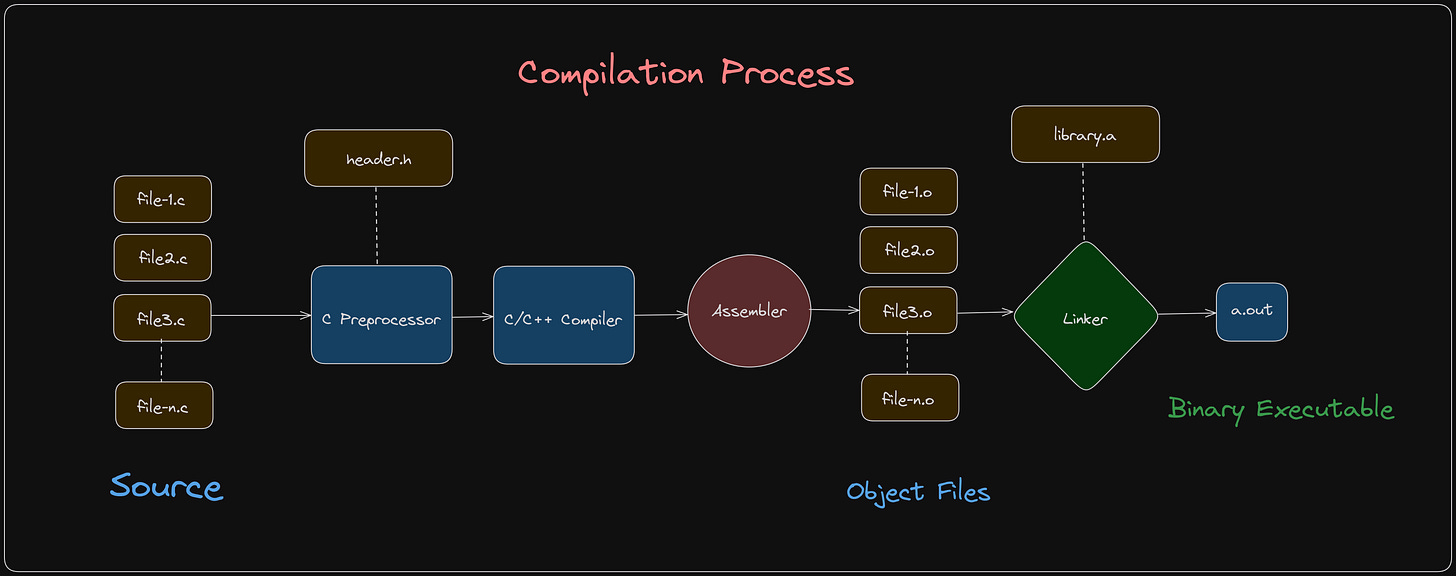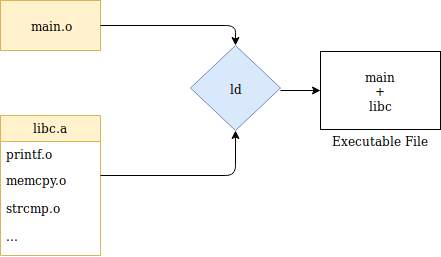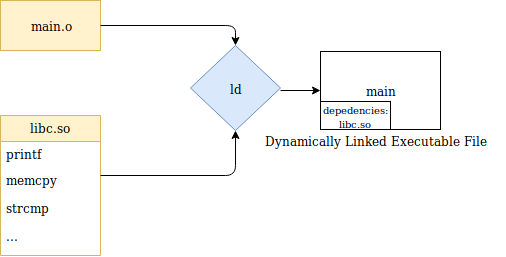From Source to Execution: Explaining the C/C++ Compilation Journey
Detailed walk through of the compilation process in C/C++
The process of converting human-readable C/C++ source code into an executable program is a complex, multi-stage process. Each stage is crucial and involves several transformations that ultimately result in a binary file that can be run on a computer. This post will provide a detailed explanation of each step in the compilation process.
1. Preprocessing: The Role of the C Preprocessor
The first step in the compilation process is preprocessing. This stage involves the C preprocessor, which processes the source code files (e.g., file-1.c, file-2.c, ..., file-n.c) before they are passed to the compiler. The preprocessor is responsible for handling directives that start with the #symbol, such as #include, #define, and #ifdef.
Handling
#includeDirectives:When the preprocessor encounters a
#includedirective, it replaces that line with the contents of the included file. For example, if the source code contains#include "header.h", the preprocessor will insert the contents ofheader.hat that point in the source code.This is crucial because header files often contain function declarations, macro definitions, and other declarations that are necessary for the compiler to understand the source code.
Macro Expansion:
Macros defined using
#defineare expanded during the preprocessing stage. For example, if you have#define length 3243, every occurrence oflengthin the source code will be replaced with3243.Macros can also be more complex, involving parameters and even conditional logic. The preprocessor handles all macro expansions, ensuring that the resulting code is free of macros and ready for compilation.
Conditional Compilation:
The preprocessor also handles conditional compilation directives like
#ifdef,#ifndef,#else, and#endif. These directives allow parts of the code to be included or excluded based on certain conditions.For example,
#ifdef DEBUGmight include debugging code that is not needed in a release build.
Output of Preprocessing:
The output of the preprocessing stage is a file that contains the source code with all macros expanded, headers included, and conditional compilation directives resolved. This file is often referred to as the "preprocessed source code" and is usually in plain C or C++ code, ready to be compiled.
2. Compilation: From Preprocessed Code to Assembly Language
The next step in the process is compilation, where the preprocessed source code is translated into assembly language by the compiler (e.g., gcc, clang, etc.). The compiler performs several tasks during this stage:
Lexical Analysis:
The compiler first breaks down the preprocessed source code into tokens. Tokens are the smallest meaningful units of the language, such as keywords, identifiers, operators, and literals.
For example, the statement
int x = 10;is broken down into tokens:int,x,=,10, and;.
Syntax Analysis:
The compiler then checks the syntax of the code to ensure it adheres to the rules of the C/C++ language. This involves building a parse tree, which represents the structure of the code.
If there are syntax errors, the compiler will generate error messages at this stage.
Semantic Analysis:
After verifying the syntax, the compiler performs semantic analysis to check for semantic errors, such as type mismatches, undeclared variables, and so on.
For example, if you try to assign a string to an integer variable, the compiler will catch this error during semantic analysis.
Code Generation:
Once the source code has passed all checks, the compiler generates assembly code, which is a low-level representation of the program. Assembly code is specific to the target architecture (e.g., x86, ARM, etc.).
The assembly code is typically written in a human-readable format, with mnemonics representing machine instructions.
Optimization:
Modern compilers perform various optimizations on the generated assembly code to improve the efficiency of the resulting machine code. These optimizations can include loop unrolling, dead code elimination, and register allocation, among others.
The optimized assembly code is then written to an output file, often with a
.sor.asmextension, representing the assembly code for each source file (e.g.,file-1.s,file-2.s, etc.).
3. Assembly: From Assembly Language to Object Code
The assembly stage involves converting the assembly code generated by the compiler into object code, which is a binary representation of the program. This stage is performed by the assembler (e.g., as for GNU assembler).
Assembly Process:
The assembler reads the assembly code file (e.g.,
file-1.s) and translates it into machine code instructions specific to the target architecture.Each assembly instruction is converted into a series of binary digits (bits) that represent the machine code.
Object Files:
The output of the assembler is an object file (e.g.,
file-1.o,file-2.o, etc.). Object files contain the machine code for the corresponding source file, but they are not yet complete executable programs.Object files also contain additional information, such as symbol tables, relocation information, and debugging symbols, which are used by the linker in the next stage.
Object File Format:
Object files are typically in a format specific to the operating system and architecture, such as ELF (Executable and Linkable Format) on Linux or Mach-O on macOS.
These formats allow the linker to understand the structure of the object file and how to combine it with other object files and libraries.
4. Linking: Combining Object Files and Libraries
The linker (e.g., ld for GNU linker) is responsible for combining multiple object files and linking them with library code to produce a complete executable program.
Linker's Role:
The linker takes one or more object files (e.g.,
file-1.o,file-2.o, ...,file-n.o) and links them together, resolving any external references to functions or variables defined in other object files or libraries.For example, if your program calls a function defined in another source file or a library, the linker ensures that these references are resolved and that the correct addresses are used at runtime.
Static vs. Dynamic Linking:
Static Linking: In static linking, the linker copies the code from the library into the final executable. This results in a standalone executable that does not depend on external libraries at runtime.
Dynamic Linking: In dynamic linking, the linker resolves references to library functions but does not copy the library code into the executable. Instead, it records the dependencies, and the necessary libraries are loaded at runtime by the operating system.
Library Files:
Libraries (e.g.,
library.a) contain precompiled code that can be linked with your program. Static libraries are archives of object files, while dynamic libraries are shared libraries that can be loaded at runtime.The linker searches for the required libraries in specified directories and resolves the external references.
Symbol Resolution:
The linker resolves symbols by matching the undefined symbols in the object files with their definitions in other object files or libraries.
If a symbol is not found, the linker generates an error, indicating an unresolved external reference.
Relocation:
The linker also performs relocation, which adjusts the addresses of code and data in the object files to their correct locations in the final executable.
This is necessary because the same code may be loaded at different addresses in memory when the program runs.
Final Output:
The output of the linker is the final executable file (e.g.,
a.out). This file contains all the code and data needed to run the program, in a format that the operating system can load into memory and execute.
5. The Final Executable: From Binary to Running Program
The final stage of the compilation process is the generation of the executable binary file (a.out), which is ready to be run on the target machine.
Executable Format:
The executable file is in a format specific to the operating system (e.g., ELF on Linux, PE on Windows, Mach-O on macOS).
This format includes not only the machine code but also metadata needed by the operating system to load and run the program, such as the entry point, section headers, and so on.
Loading and Execution:
When the executable is run, the operating system's loader loads the program into memory. The loader sets up the program's address space, initializes the stack and heap, and transfers control to the program's entry point (usually the
mainfunction in C/C++ programs).The program then executes, and the CPU fetches and executes the machine code instructions in the executable.
Debugging and Symbols:
If debugging information was included during compilation (e.g., using the
-gflag withgcc), the executable will contain symbols that map the machine code back to the source code.This allows debuggers like
gdbto provide meaningful information when debugging the program.
6. Summary of the Compilation Process
In summary, the compilation process in C/C++ involves several distinct stages:
Preprocessing: The C preprocessor handles includes, macros, and conditional compilation directives, producing a preprocessed source code file.
Compilation: The compiler translates the preprocessed source code into assembly language, performs optimizations, and generates assembly code.
Assembly: The assembler converts the assembly code into object code, producing object files.
Linking: The linker combines the object files with library code, resolves external references, and generates the final executable binary.
Execution: The operating system loads the executable into memory and runs it.
Each stage is critical, and understanding the details of each step is essential for debugging, optimizing, and maintaining C/C++ programs.




